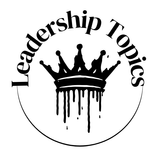A Leadership Guide: How to Build and Sustain Momentum for Your Change Plans
Learn how to build and sustain momentum in your change initiatives by understanding employee emotions, measuring change momentum, and fostering transparency for lasting success.

In today’s fast-paced business environment, change is no longer a one-time event but an ongoing necessity for organizations to stay competitive. However, implementing significant change initiatives is often fraught with challenges, and many leaders find themselves grappling with resistance, fear, and confusion from their teams. One of the most common pitfalls leaders encounter is misreading the emotional pulse of their organization.
Many leaders fall into the trap of relying on gut instinct, believing they understand how their employees are coping with change, when in fact, they may be missing critical emotional cues. This can lead to miscommunication, resentment, and a lack of buy-in, ultimately undermining the success of the change initiative.
To successfully drive change, leaders need to not only focus on the strategic elements but also understand the emotional journey their employees are on. Here’s how you can build and sustain momentum throughout your change efforts.
The Hidden Risks of Gut Instinct
Leaders often think their prior experiences with change equip them to navigate new situations, but this can be a dangerous assumption. Three key issues arise when relying solely on instinct:
- Overestimating Similarities: Leaders may mistakenly assume that the current change is similar to past experiences and fail to account for the unique dynamics of the present situation.
- Conflating Emotions: There is a tendency for leaders to project their own emotions and reactions onto their employees, assuming that everyone feels the same way they do.
- Faulty Memory: Leaders often romanticize past success while forgetting the struggles that occurred along the way. This selective memory can lead to overconfidence and prevent leaders from fully appreciating the obstacles their team might face.
These factors, combined, make it difficult to gauge the true mood within the organization. When the emotional landscape is misunderstood, it leads to frustration and a lack of alignment, which can derail even the best-laid plans.
Why Change Can Be Disruptive and Stressful
For most employees, change triggers anxiety and uncertainty. While leaders focus on the big picture, employees are usually more concerned with the immediate impact on their job security and daily responsibilities. This misalignment of priorities can create tension and resistance.
Leaders must remember that change is personal, and employees are naturally hesitant when faced with unknowns. Research shows that around 75% of corporate transformations fail to deliver the expected value. Employees may be rightfully skeptical about the promises of new initiatives, especially when they have witnessed previous changes fail to produce the desired results.
Understanding and Measuring Employee Emotions
To address this disconnect, leaders must prioritize understanding how employees feel about the changes, rather than assuming how they should feel. Monitoring employee emotions in real time is critical to maintaining momentum and preventing burnout.
The solution is to measure employee sentiment regularly—just like tracking key business metrics such as revenue, costs, or customer satisfaction. You wouldn’t rely on gut instinct alone to assess company finances, so why rely on it to gauge employee buy-in?
Tracking Progress Through Change Momentum
One of the most effective tools for maintaining change momentum is to establish a system that measures not only the capability of your team to execute the required changes but also their confidence in doing so. We call this change momentum—a key indicator of whether your change program is progressing or stalling.
Change momentum combines two factors:
- Ability: Do employees have the skills and resources to make the change happen?
- Confidence: Do they believe in their own ability and the likelihood of success?
As leaders, it’s crucial to assess these factors regularly and adjust the pace of change based on real-time feedback. When you understand where employees stand emotionally, you can intervene early to address concerns, provide additional support, or clarify misunderstandings before they snowball into larger issues.
Fostering Confidence and Buy-in
Employees are more likely to embrace change when they feel included and heard. Before launching a major initiative, involve your team in the planning process. Use surveys, one-on-one conversations, or anonymous feedback tools to gather input on how they perceive the change.
Frequent check-ins throughout the implementation phase will help you monitor employee sentiment and provide an opportunity to adjust your strategy as needed. Empowering employees to voice their concerns and ideas not only builds trust but also fosters a sense of ownership over the change.
As you gather feedback, be sure to address key areas where employees may lack confidence:
- Clarity: Do employees understand the goals of the change and their role in it?
- Support: Are they receiving the tools, training, and resources they need to succeed?
- Encouragement: Are leaders providing positive reinforcement and recognizing progress?
The Role of Self-Efficacy in Driving Change
One powerful concept that can drive successful change is self-efficacy, or the belief in one’s ability to succeed. As Stanford psychologist Albert Bandura explained, self-efficacy plays a significant role in whether individuals persist through challenges. Employees who believe they can achieve the desired outcome are more likely to stay committed, even when difficulties arise.
Leaders should focus on boosting self-efficacy across the team by creating an environment where employees feel supported, capable, and motivated. When employees believe they have the tools and guidance to succeed, they are more likely to embrace change with confidence.
Creating a Culture of Transparency
Leaders must commit to ongoing transparency throughout the change process. This means keeping communication lines open, providing updates on progress, and being honest about challenges or setbacks. A transparent approach builds trust and reduces the likelihood of resistance.
In addition to transparency, leaders should cultivate a culture of psychological safety—where employees feel comfortable sharing their concerns or ideas without fear of repercussions. When employees know they can speak up, they are more likely to contribute valuable insights and help course-correct when needed.
Sustaining Momentum
Change is not a one-time event; it’s a continuous journey that requires active leadership and ongoing employee engagement. By measuring emotions, fostering confidence, and maintaining open communication, leaders can build and sustain momentum throughout the change process.
Remember: Successful change isn’t just about strategy; it’s about understanding and addressing the emotional landscape of your team. By doing so, you can lead your organization through transformation with resilience, clarity, and purpose.
The Leadership Topics
ART Walkway Highlights
For the latest trends in the art world, visit our sister magazine for in-depth features and exclusive insights:












